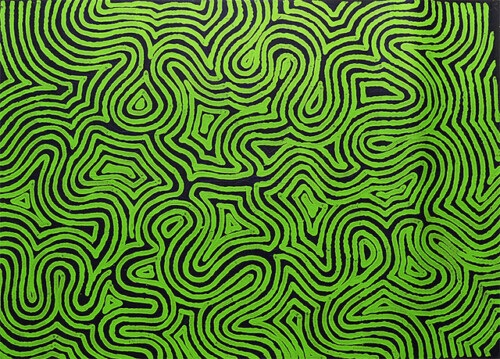From The Australian
In her little book Chaos, Territory, Art, philosopher Elizabeth Grosz provides us with a way of, if not understanding, at least experiencing and appreciating Aboriginal art, with the assistance of one of the 20th century’s most exhilarating and frustrating philosophers.
The murky history of Aboriginal art has always made it a “dicey proposal politically”, as Grosz puts it, for academics to weigh into aesthetic discussions about it. But as she was reading Deleuze’s book on Bacon, it occurred to her that, like Bacon, indigenous artists had “exploded many of the underlying assumptions of western art”.
“Much of western desert art functions through a kind of resonance much more than through the narratives that are commonly associated with each work,” she says. “Although there is a narrative there (like in popular music), the narrative doesn’t have to make sense, or even to be known, for the work to have its effects. In this, it was much like music, and often associated with music.”
With this revelation in mind, Grosz went to Alice Springs and visited some of the artist groups in 2003, a trip that gave her the “direct spark of connection” with her book on how art is created and why it affects us.
Grosz’s book only gets to a discussion of indigenous art in the third and final chapter, “Sensation. The Earth, a People, Art”. Her elaboration of western desert painting as being as important to contemporary art as Cezanne comes in a dozen or so pages towards the end.
First, she outlines a way of thinking about art that is not about finding its meaning or understanding its processes, but about feeling its effects.
“I don’t want to deny that artworks have meaning,” Grosz says, “but it may be that in our century-long fascination with language, and with the reduction of all artworks to their linguistic representations, has blunted us to something extra-linguistic that I think even language has: a force or affective resonance that we feel when we experience art directly but that we often or sometimes lose when we over-interpret it.

